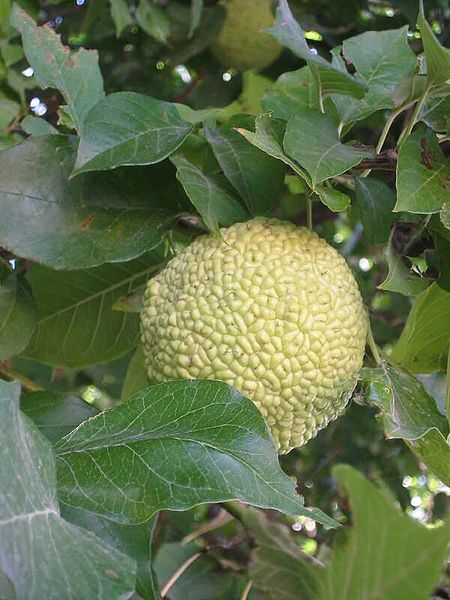Evolution is a diligent innovator and the diversity it has achieved offers the curious seemingly unending marvels. In some cases, though, a particular innovation might not make much sense on initial consideration. In those cases, zooming out in time can be instructive.
Whit Bronaugh, writing for American Forests, demonstrates this using the concept of ecological anachronisms:
An ecological anachronism is an adaptation that is chronologically out of place, making its purpose more or less obsolete.
The concept was developed by ecologist Daniel Janzen (a former SALT speaker) and Bronaugh calls on the Osage-orange to bring it into focus.
The Osage-orange is a North American tree that produces large, lumpy fruit. Those fruit fall to the ground and rot, ignored rather than ingested and spread (along with their seeds), every fall. Other parts of the tree feature long thorns that do little to discourage deer from eating their foliage. These adaptations, it would seem, aren’t adaptive at all, but rather strange, pointless wastes of energy. The tree’s range across North America is known to have contracted over the last few millennia, so this view isn’t entirely unfounded.
The fruit and the thorns, however, were adaptive when megafauna such as mammoths and gound sloths roamed the continent. The large fruit were a common part of the mammoth diet and the thorns were just the right size to discourage creatures much larger than deer from chewing up the leaves and branches. As Bronaugh explains,
It’s true that such adaptations are now anachronistic; they have lost their relevance. But the trees have been slow to catch on; a natural consequence of the pace of evolution. For a tree that lives, say, 250 years, 13,000 years represents only 52 generations. In an evolutionary sense, the trees don’t yet realize that the megafauna are gone.
Though in our lifetime, mammoths and ground sloths may seem long gone, the evolutionary moment in which we live still resonates with their presence. Perhaps a reprise is possible?
(Read: The Trees That Miss The Mammoths – American Forests)
